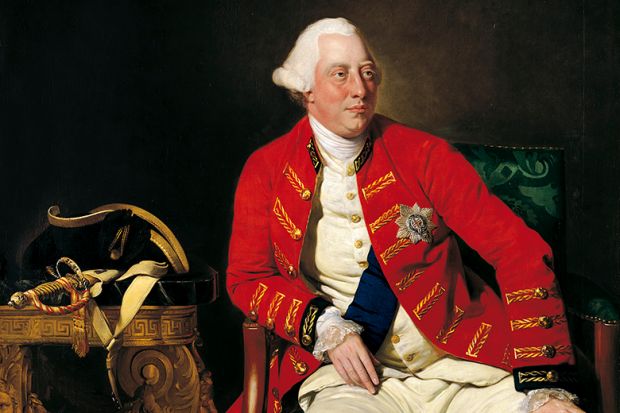Vast amounts of material from the Royal Archives at Windsor Castle can now be freely accessed by researchers and others across the world.
The Georgian Papers Project, launched by the Queen in April 2015, is a collaboration involving the Royal Collection Trust, lead academic partner King’s College London, and US organisations such as the Omohundro Institute of Early American History and Culture and The Sons of the American Revolution.
A total of 350,000 pages covering the whole period from 1714 to 1837 (of which only about 15 per cent have been published before) will be available online by 2020. The first 33,000 went live on 28 January.
Much of the material comes from the pivotal reign of King George III (1760-1820).
Joanna Newman, vice-president (international) at King’s, described the collection as an “amazing resource” that will allow “opportunities for reinterpretation and scrutiny of many aspects of 18th- and early 19th-century life, political, social and economic, as well as seeing George III through more informed perspectives.
“He was fascinated by science. The Industrial Revolution happened on his watch. It’s appropriate that George III is now breaking new ground in the digital sphere, bringing value at all academic levels, from undergraduates onwards,” she said.
King George III was both the last king of the American colonies and the first king of Australia.
In this 250th anniversary of the American Declaration of Independence, noted Karin Wulf, director of the Omohundro Institute, the Georgian Papers represent “the last major unexplored source” for the British side of the story.
They also include material about agriculture, ambassadors and astronomy; menus and music; spies and statesmanship; religious toleration and royal child-rearing. Taken together, argued Arthur Burns, professor of modern British history at King’s, and shortly to become the academic director of the project, they offer “a revealing picture of the functioning of the world around the king at a critical moment in the development of the British state, when it is becoming a leading driver of innovation and reform”.
The papers have been stored in Windsor Castle’s Round Tower since 1912. The floor has now been refitted to facilitate the digitisation process and create a new research room, increasing access to the collection twelvefold.
The Sons of the American Revolution are sponsoring five visiting professorships, while King’s, the Omohundro Institute and the Mount Vernon Ladies Association are funding fellowships for researchers to work in the archives.
Initial fellows are exploring everything from Scottish emigration to revolutionary America and authors of African descent at the Georgian court to King George’s map collection and a particular dinner he ate with his wife in 1789. Digitisation is already being accompanied by commentary and interpretation on both the British and American websites.
The new resource was unveiled at Buckingham Palace on 23 January – in a room that was once the site of King George’s private library – in the presence of Sir Christopher Geidt, the Queen’s private secretary. There was also a screening of the new BBC Two documentary, George III: The Genius of the Mad King.




